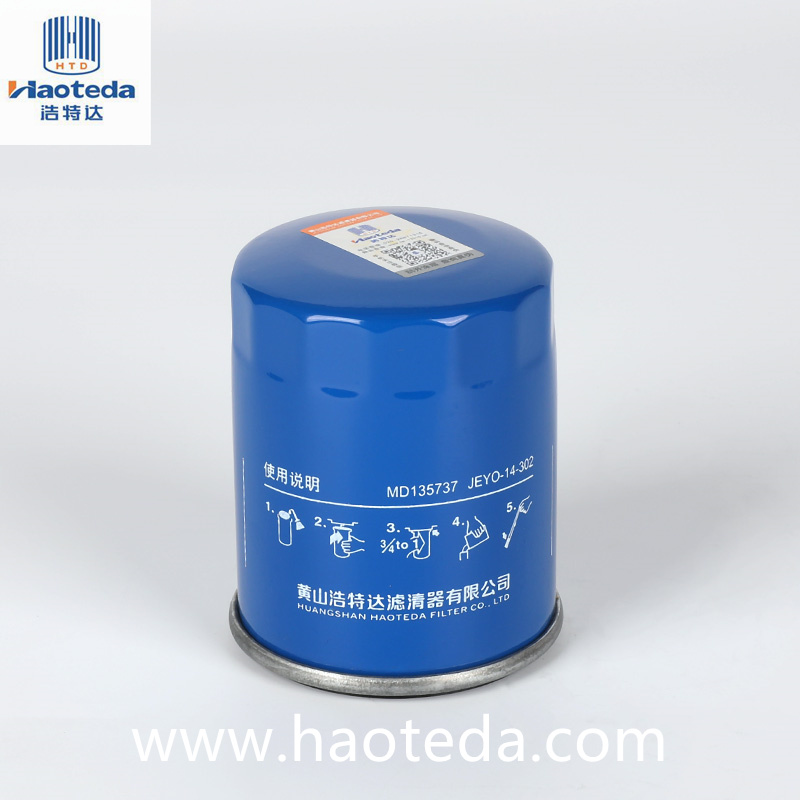When evaluating the performance of a spin on oil filter, the focus often starts and ends with its ease of replacement or the strength of its metal housing. But the real core of the filter's effectiveness lies within—the filter media. This inner layer, often overlooked in general discussions, plays the most critical role in determining how well your engine is protected over time. For engines running in industrial, commercial, or even demanding automotive environments, the difference in media quality directly translates to a difference in engine wear, oil cleanliness, and long-term maintenance costs.
At its most basic level, the filter media inside a spin on oil filter is responsible for trapping impurities—dust, metal shavings, carbon deposits—that naturally accumulate in engine oil during operation. The materials used vary widely: cellulose, synthetic fibers, and blended media each have different capabilities when it comes to micron filtration and durability. While cellulose is still common due to cost-effectiveness, synthetic media offers finer filtration and better flow under pressure. Blended options try to balance cost and performance, which is why manufacturers like us design our product lines to cater to specific usage scenarios and customer needs.
What really distinguishes a high-quality spin on oil filter is not just the type of media, but how that media is engineered—its surface area, density, and pleat stability under pressure. More surface area means more contaminants can be captured before oil flow is restricted, and that translates into longer intervals between replacements. On the other hand, poor-quality filters may collapse under high pressure or let bypass flow engage prematurely, allowing unfiltered oil to circulate. That’s where real-world testing and quality control make a difference. As a manufacturer with industry experience, we know that even minor changes in media thickness or bonding method can significantly alter performance under load.

Another important aspect is how filter media interacts with oil flow. In high-performance engines or in heavy machinery, oil viscosity changes with temperature, and this impacts how easily it flows through the filter. Inferior media can cause pressure drops, starving the engine of lubrication when it needs it most. We’ve seen this particularly in export markets with extreme climate variations, where performance consistency becomes a non-negotiable requirement. This is why professional buyers often seek data-backed filtration efficiency ratings and real test results—these factors are just as critical as the brand or price point.
Additionally, the longevity of the spin on oil filter is tied closely to media quality. Filters with poor structural integrity degrade faster and risk releasing trapped particles back into the oil stream during vibration or high-speed operation. In contrast, premium media holds its form and filtration capacity throughout the service interval, reducing the risk of oil contamination and mechanical wear. For customers who value reliability and performance—especially in sectors like transportation, construction, and agriculture—investing in a filter with proven media performance is a smart operational decision.
We always advise customers to consider the total cost of ownership when selecting a spin on oil filter. A cheaper filter might save money today but could cost far more in engine repairs or shortened oil life down the line. With decades of experience in manufacturing filtration solutions, we’ve tailored our product designs to not only meet, but exceed, OEM requirements in both domestic and international markets. That means selecting the right media combination for different engines, climates, and service intervals—not just delivering a product, but delivering confidence.
Choosing a spin on oil filter with high-quality media isn’t just a technical decision—it’s a strategic one. It reflects a long-term approach to equipment health, performance reliability, and cost efficiency. Whether you’re managing a fleet or stocking for industrial resale, understanding what’s inside the filter is just as important as what’s on the outside. And that’s where real product value begins.
 English
English
 English
English Español
Español Français
Français
 +86-139-6774-0263
+86-139-6774-0263









